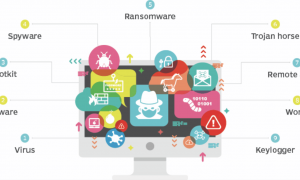Phishing attacks have remained a persistent threat in the digital world, causing headaches for both individuals and organizations over the years. Despite employing anti-phishing measures and familiarizing ourselves with these deceptive tactics, a new emerging threat has gained momentum, targeting users’ inboxes by bypassing anti-phish filters.
In this article, we explore the ingenious method employed by hackers, where QR codes are embedded within emails to trick users into scanning them. Traditional security systems often lack the capability to scrutinize QR code-based URLs, rendering users vulnerable to novel QR phishing campaigns.
Understanding QR Codes and Their Prevalence:
Quick Response (QR) codes, the two-dimensional barcodes designed for visual data storage, have become a ubiquitous feature in various industries, including marketing, retail, ticketing, and healthcare. By scanning QR codes using smartphones or QR code readers, users can conveniently access website URLs, contact details, or promotional content.
The Mechanics of QR Code Phishing:
- Distribution: Malicious QR codes are disseminated through diverse channels, such as emails, social media, print materials, or even physical stickers placed over legitimate QR codes in public spaces.
- Deception: The malevolent QR code redirects users to a fraudulent website, closely resembling a legitimate one. These fake websites prompt users to disclose sensitive information, like login credentials, personal details, or financial data.
- Collection of Information: Unsuspecting users inadvertently provide their data, allowing cybercriminals to capture and store this information, later exploited for identity theft, financial fraud, or targeted attacks.
Effective Mitigation Strategies:
To combat QR code phishing and fortify online security, adopt the following strategies:
- Awareness and Education: Educate users about the risks associated with QR code phishing and how to differentiate between legitimate and fraudulent QR codes.
- QR Code Scanning Apps: Choose reputable QR code scanning applications equipped with built-in security features, capable of detecting and warning against potential malicious codes.
- Scrutinize URLs: Prior to entering sensitive information, always examine the URL displayed after scanning a QR code to verify its authenticity.
- Enable Two-Factor Authentication: Implementing two-factor authentication adds an additional security layer, minimizing the risk of unauthorized access even if phishing attempts are successful.
- Stay Updated: Regularly update devices, applications, and security software to safeguard against known vulnerabilities and exploits.























